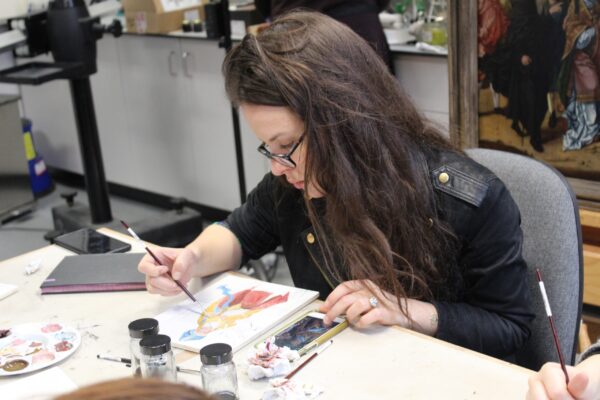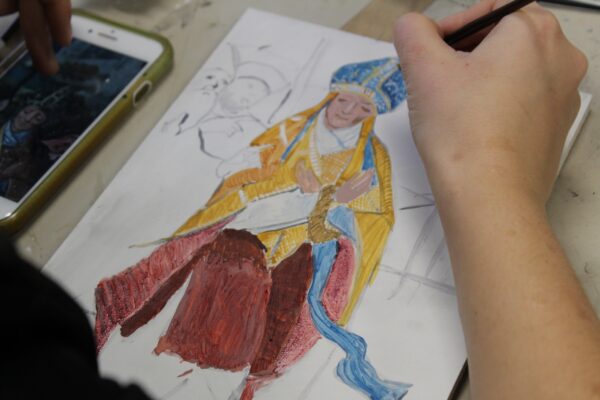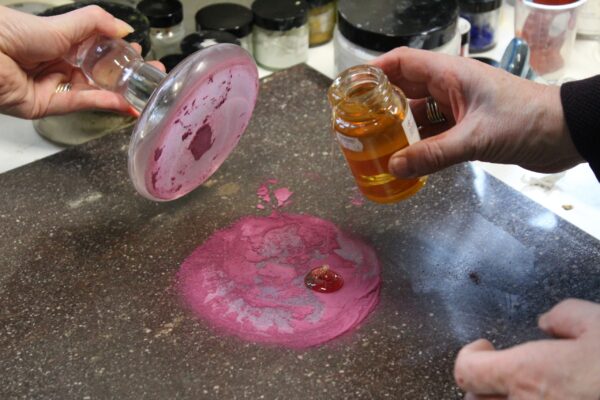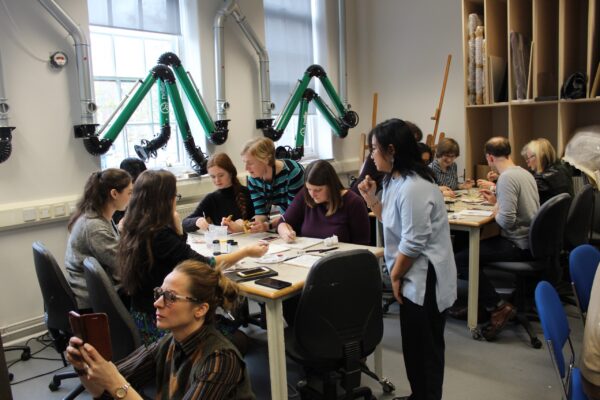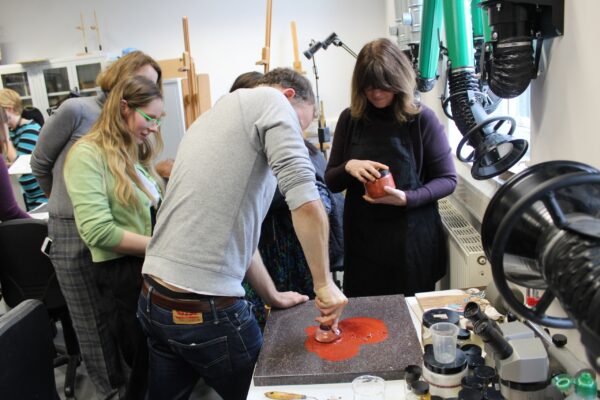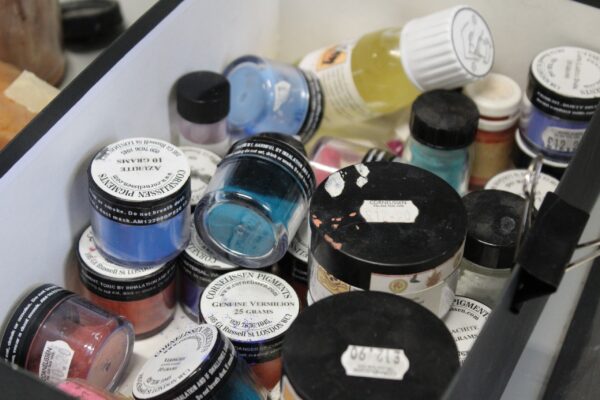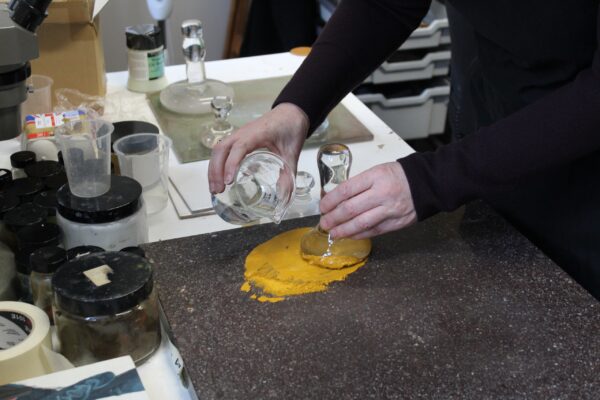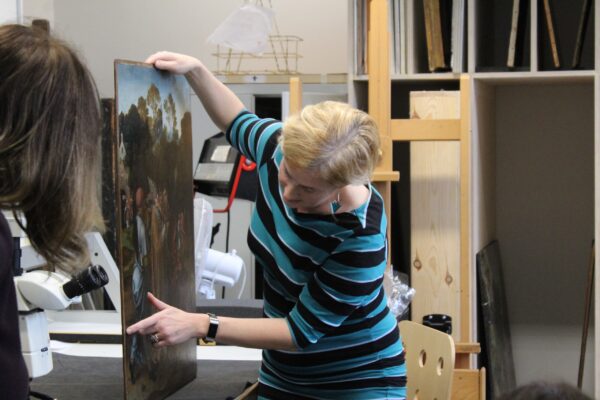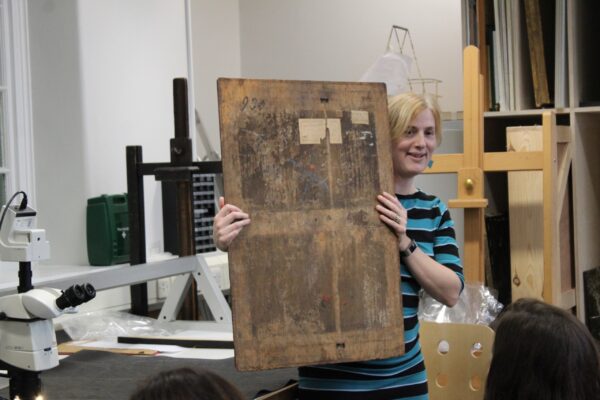Before I was doing my PhD – back when I was youthful and starting an undergraduate degree – a student a few years above me attempted to make an egg-tempera crucifixion painting for his final piece. I was fascinated; suddenly I was aware of the materiality of paint, I was thinking of how painters worked before they could reach for a tube of acrylic, when making paint involved teams of people straining to transform raw materials into images. Anyway, my egg-tempera-inspirer obtained 500 eggs on the cheap from a farmer, but – blaming it on bad eggs – something somewhere in his process went wrong and he was left with soggy canvases that stank. It was not until the Material Witness workshop this month that I got the chance to have my kindled interest in egg-tempera and its possibilities explained. I even got to try it myself and the painting is sitting on my bookshelf and I can’t smell it yet.
The Material Witness workshop was hosted at the Courtauld, by Professor Susie Nash and conservator Clare Richardson. The first part of the session was a forensics feast, the like I’ve only ever seen on gruesome detective shows. We put our sample – a painting that showed a crowd surrounding an unknown bishop, complete with many accusing fingers dancing around the composition – through the works; micro-scoping it to the 9th degree, looking at infra-red scans and x-rays. We even looked at the back of it and discovered there a whole history lesson on Baltic forests. Then, next door it was time for a whistle stop tour through alchemy – mixing powders and liquids, grinding rocks that were as heavy as lead and as expensive as moondust, and sealing with glazes that looked like raspberry jam.
But, the egg-tempera was what I had come for and it did not disappoint. I am not a fan, generally, of eggs and their many mucous bits. Therefore, it was with the kind of horror from which you cannot look away that I watched as the eggs were broken and separated; the yolk, cradled in an expert hand was rolled back and forth like a stress-ball, to dry off excess gloop. Then a deft thumb and fore-finger pinched the yolk sac (an element I’m not sure I wanted to know existed) and drew away the membrane, releasing pure golden yolk liquid into the little pots. To this we added water to make our mixing medium, which we could then combine with our ground pigments. Back in the day, it was advised to use the eggs of country chickens to paint florid faces – generally bishops and the like – and the eggs of scrawny city chickens if you wanted the unearthly paleness of a Madonna. Our eggs were firmly free-range and so, in my copy of the sample painting, my unknown bishop was as ruddy as could be.
The paint texture was like liquid silk. Although the egg-tempera is absorbed into the gesso ground very quickly, it takes days to dry properly – so the paint must be applied with small strokes that directly abut each other but do not overlap. Concentrating on applying such small mellifluous strips of glorious colour made me almost transcendent. I can only hope to have more encounters (dare I say egg-counters) with egg-tempera in the future.







